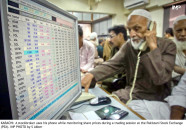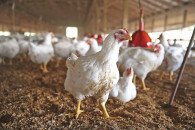Cost escalation: BISP’s poverty survey costlier than population census
Pressing need to conduct the survey; amount estimated at Rs10b

BISP Secretary Shabbir Ahmad told the Board that the estimated cost of the survey was Rs10 billion - a figure the Board members could not digest. PHOTO: PID
The management of Benazir Income Support Programme has estimated the cost of conducting a fresh poverty survey at Rs10 billion that would flush out ineligible beneficiaries and bring in new ones. However, the cost is 42% more than the cost of holding the upcoming population census.
Despite concerns about the high cost of the exercise, there is a pressing need to hold a fresh poverty survey as tens of thousands ineligible people are found receiving an annual cash stipend of Rs18,000. A data integrity check of 1.58 million people revealed that 8% of those or 125,714 were ineligible and were receiving Rs2.2 billion annually.
Read: Missing goals: 300,000 families remain deprived under BISP
Since its inception, an amount of Rs310 billion has been disbursed among the beneficiaries. For the current fiscal year, the BISP has been allotted a budget of Rs102 billion.
Choosing a plan
The BISP management raised the issue of conducting the household survey in the July-3 meeting of the BISP Board, seeking its approval for the comprehensive exercise. BISP Secretary Shabbir Ahmad told the Board that the estimated cost of the survey was Rs10 billion - a figure the Board members could not digest.

The members questioned the high cost while quoting the price of conducting the next Population Census, which is estimated at roughly Rs7 billion, according to a member of the BISP Board. Although the board gave in principle approval for conducting the poverty survey, it directed the management to come back for seeking the approval of the cost.
The Board also advised the BISP management to consider an option to add the poverty questionnaire with the Population Census questions, which will give the exercise more credibility besides saving billions of rupees. The population census is planned for March next year.
When contacted, BISP Secretary confirmed that the Rs10 billion estimated cost figure was discussed in the meeting. “However, the actual cost could range between Rs8 billion to Rs12 billion, which will depend upon the final bid price”, he added.
The Secretary said that there was no firm base for Rs10 billion-estimated cost. “The cost of the last poverty survey, which was conducted in 2010, was Rs5.5 billion,” said Ahmad. “Like the Population Census, every household will be covered in the poverty survey, irrespective of its locality.”
Points to improve
BISP is of the view that the aging factor of the data is affecting the relevance of the last poverty survey each day, “resulting in proportionate amount of leakages and compromise in outreach efficiency”.
It added that in order to ensure the neutrality and objectivity of the entire exercise it is also vital that the resurvey or recertification should not be done near the end of term of the incumbent political government. The BISP management stated that the inclusion of the ineligible persons and exclusions of eligible ones carry direct implications for the effectiveness of the programme.
Read: Ambitious plan: Govt increases BISP fund by Rs5 billion
At present, out of total roughly 5 million beneficiaries, 4.7 million are getting their assistance through six banks whereas remaining approximately 300,000 receive the payment through Pakistan Post Office.
The sample estimates of existing poverty survey data show that about 87% of the beneficiaries come from rural areas. The BISP said that recent changes in the country’s economic indicators of poverty and unemployment may have significantly altered the household composition and demographic information. Similarly, there is a possibility that a household having entered the BISP programme at a certain level of welfare may no longer need assistance.
The BISP is also facing the problem of screening out ineligible people who have managed to enter the system, apparently in connivance of corrupt elements. A recent data sanity check revealed that out of 1.58 million beneficiaries as many as 125,714 were ineligible.
The secretary said out of those, slightly over 100,000 were receiving payments for last many years. He said the BISP has now blocked payments to them and legal prosecution will begin. He said the BISP will now start screening the data of the remaining 3.92 million people who are on the active list and the fakes ones will be flushed out.
Published in The Express Tribune, July 16th, 2015.
Like Business on Facebook, follow @TribuneBiz on Twitter to stay informed and join in the conversation.



















COMMENTS
Comments are moderated and generally will be posted if they are on-topic and not abusive.
For more information, please see our Comments FAQ